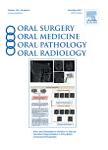版权所有:内蒙古大学图书馆 技术提供:维普资讯• 智图
内蒙古自治区呼和浩特市赛罕区大学西街235号 邮编: 010021

作者机构:United States - University of Florida Gainesville FL
出 版 物:《Oral Surgery, Oral Medicine, Oral Pathology and Oral Radiology》
年 卷 期:2025年第139卷第3期
页 面:e75-e76页
摘 要:ObjectiveUntreated caries are a prevalent health condition worldwide. Management of caries includes preventive and restoring teeth and function when necessary. In recent years, significant progress has been made with the introduction of artificial intelligence algorithms in dentistry, which includes diagnosis of incipient and advanced carious lesions. The objective of this study is to determine the sensitivity and specificity of Overjet Caries Assist (OCA), a radiologic automated concurrent read computer-assisted detection software, on incipient enamel and dentinal caries. Study DesignIn total, 1142 proximal surfaces were assessed in 200 bitewing images by an oral radiology resident and a calibrated dental student. The presence of incipient decay was recorded and then OCA was used. Caries successfully identified by the software, incorrectly identified, and missed lesions were recorded. The same process was then performed on 535 proximal surfaces in 50 bitewing images, and the presence of dentinal decay was recorded and the same recording process above was repeated. Sensitivity and specificity calculations were performed. ResultsThe data revealed a sensitivity of nearly 70% for incipient caries and a specificity of approximately 98%. The sensitivity of dentin caries was found to be nearly 94%, with a specificity of 97%. ConclusionIn general, human sensitivity of detection of proximal carious lesions ranges from 24% to 43% and specificity is 89% to 97%. Our results indicate that OCA is overall accurate, with greater sensitivity and specificity on proximal carious lesions and markedly high sensitivity for dentinal lesions. Artificial intelligence models have the ability to provide a reliable tool in assisting in the diagnosis of caries.